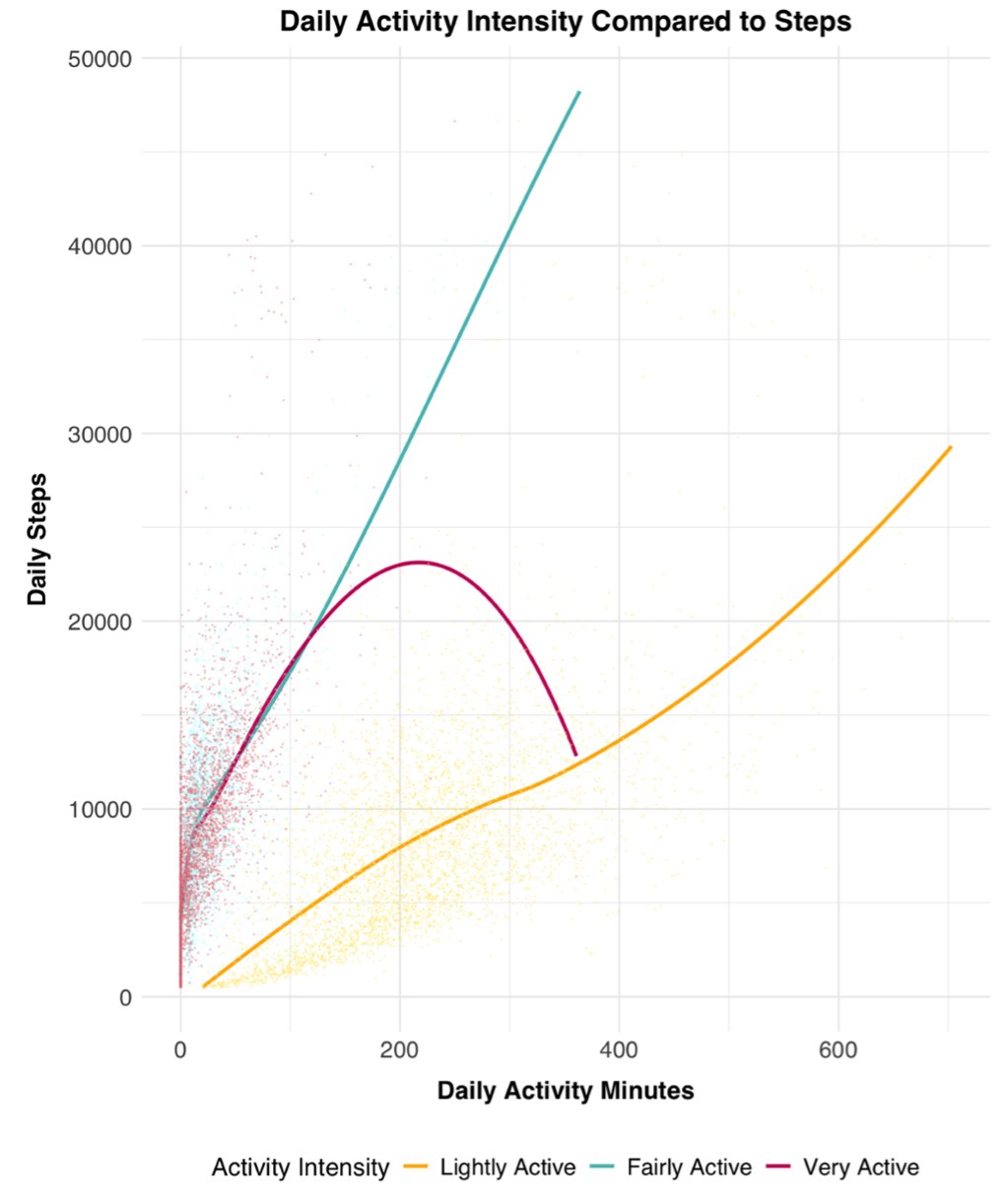Welcome to Data Bytes, where we share data insights from our ongoing research. This week’s visuals are courtesy of our summer intern Tanisee Nagaldinne from the CPP Tracker study.
Hello dear readers! This week on Data Bytes, we focus on physical activity patterns based on the FitBit trackers our participants wear during the study.
Understanding Activity Intensities
Before we jump into the results, let’s quickly review the three main activity intensities we’re looking at:
- Light intensity: This category includes activities like casual walking, stretching, or light housework.
- Moderate intensity: These activities require more energy expenditure, such as brisk walking, moderate swimming, or using gym equipment (e.g., elliptical, Stairmaster) at a pace where you can still chat.
- Vigorous intensity: Here we’re talking about running, fast cycling, competitive sports, or intense swimming.

Now, let’s break down what the FitBit tracker data tell us about your daily steps and activity types:
- Fairly active drives your steps: Most of your daily steps come from moderate-intensity activities. This is great news, as these activities offer significant health benefits while being sustainable for most people.
- Light activities dominate your day: Not surprisingly, you spend most of your time in light activity. This makes sense, given that many daily tasks fall into this category.
- Very active doesn’t always mean more steps: Interestingly, those of you logging the most vigorous activity minutes aren’t necessarily racking up the highest step counts. This suggests you’re engaging in intense activities that don’t involve stepping, like swimming or cycling.
The Big Picture
These data paint a picture of how different activity intensities contribute to individuals’ overall step count. It’s a reminder that all movement counts, whether it’s a leisurely stroll, a brisk walk, or an intense workout that doesn’t involve steps at all.
We’re thrilled to see such diverse activity patterns among our participants. Remember, the best exercise is the one you enjoy and can stick with consistently. Whether you’re a step champion or prefer non-step based activities, it all counts toward better health.
Thank you for being part of this exciting research. Your participation is helping us better understand well-being patterns in chronic pelvic pain conditions, which could lead to more effective health recommendations in the future. Keep moving, keep tracking, and stay tuned for more insights from your data!
Do you have any questions about these findings or how they relate to your personal activity patterns? We’d love to hear from you. Happy stepping, everyone!
This Data Byte is part of the CPP Tracker study.
